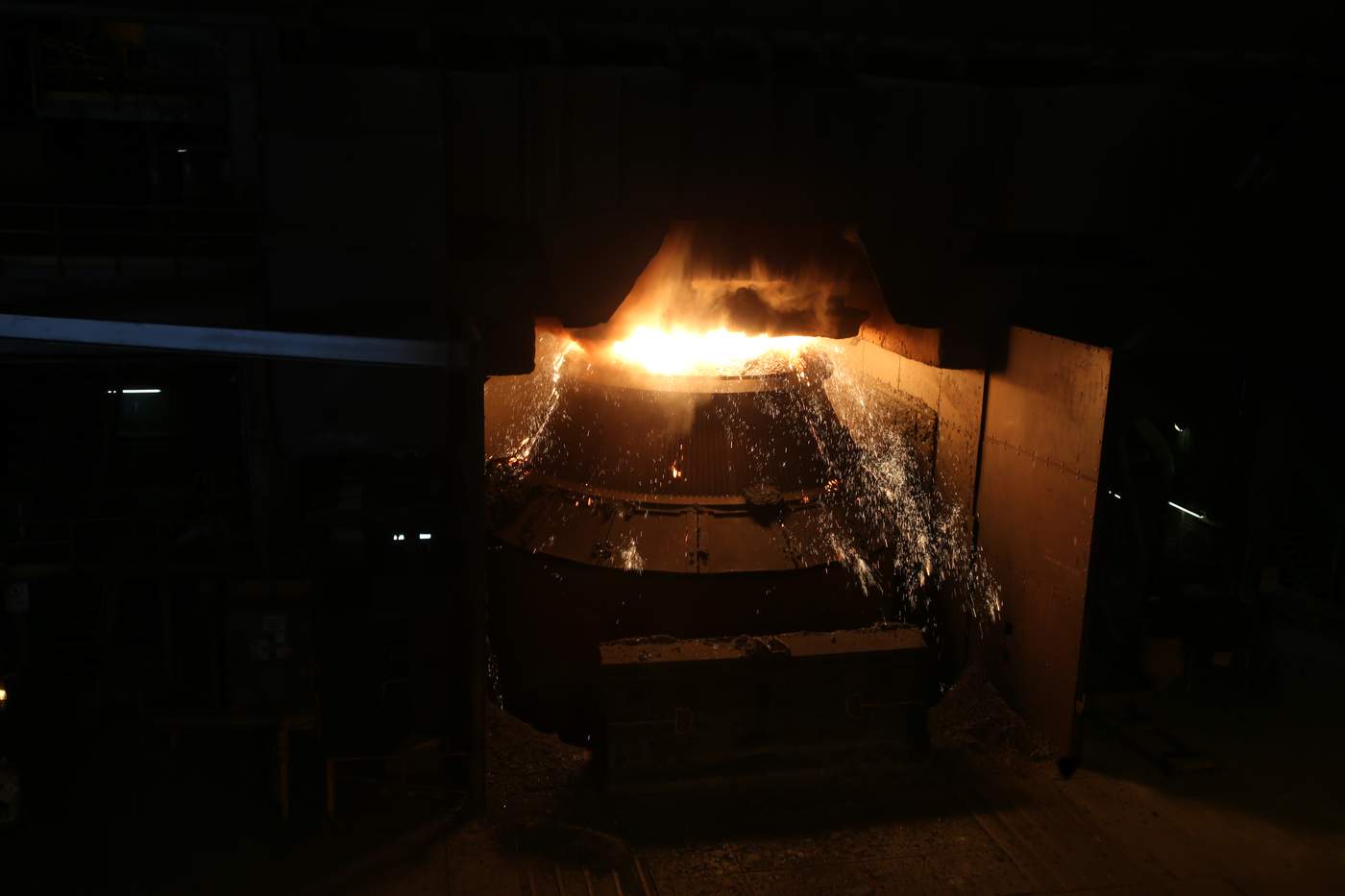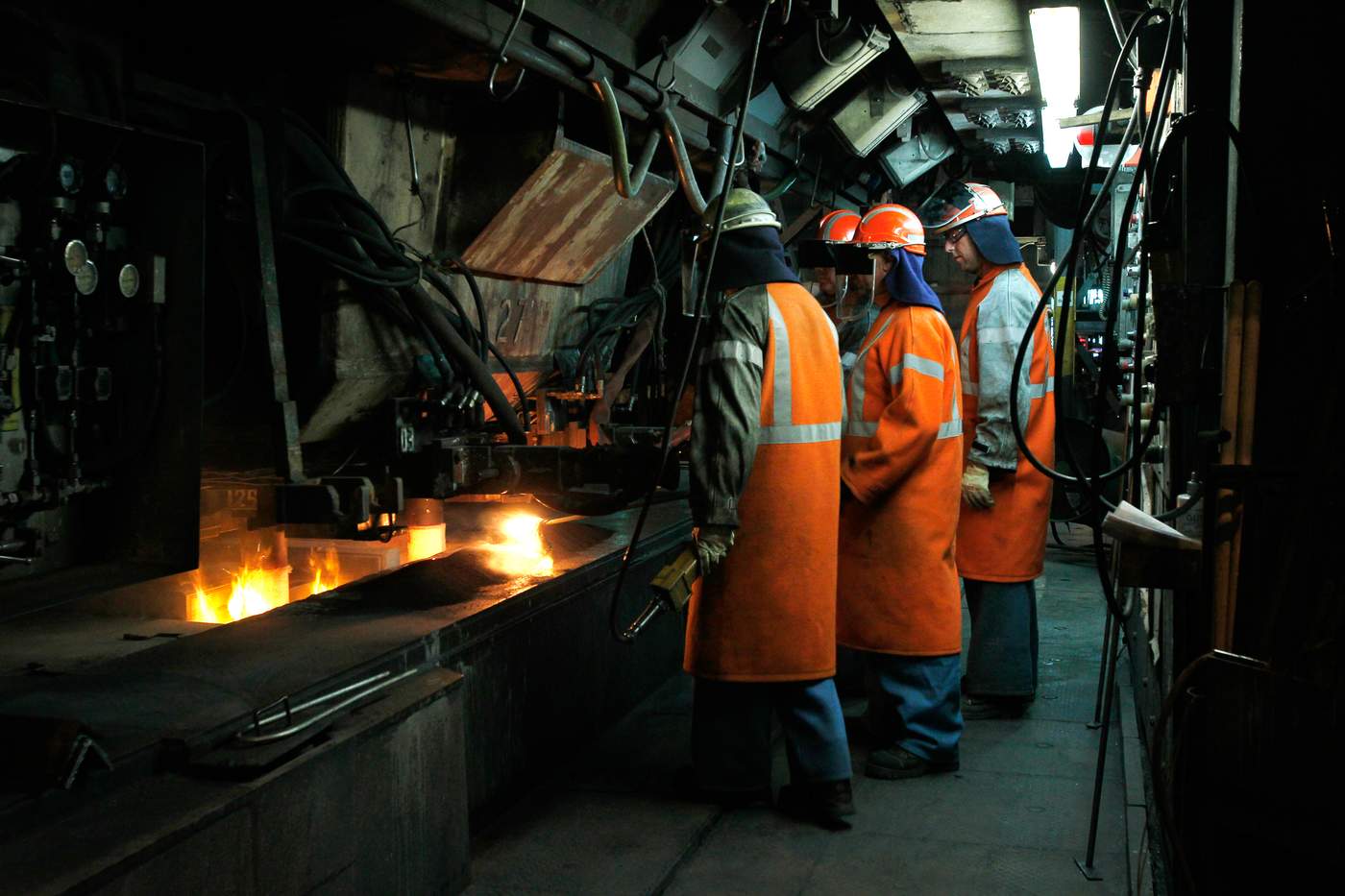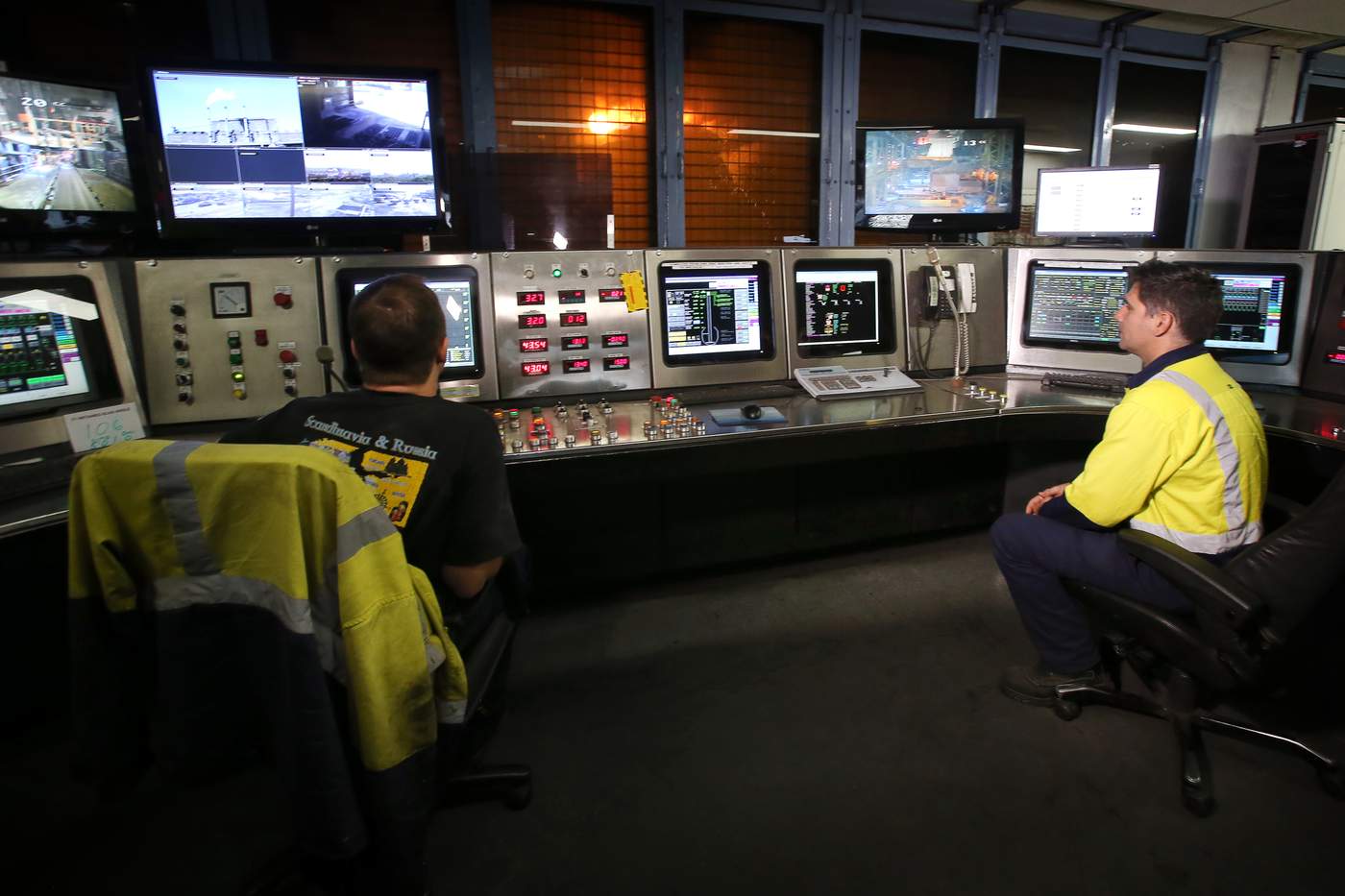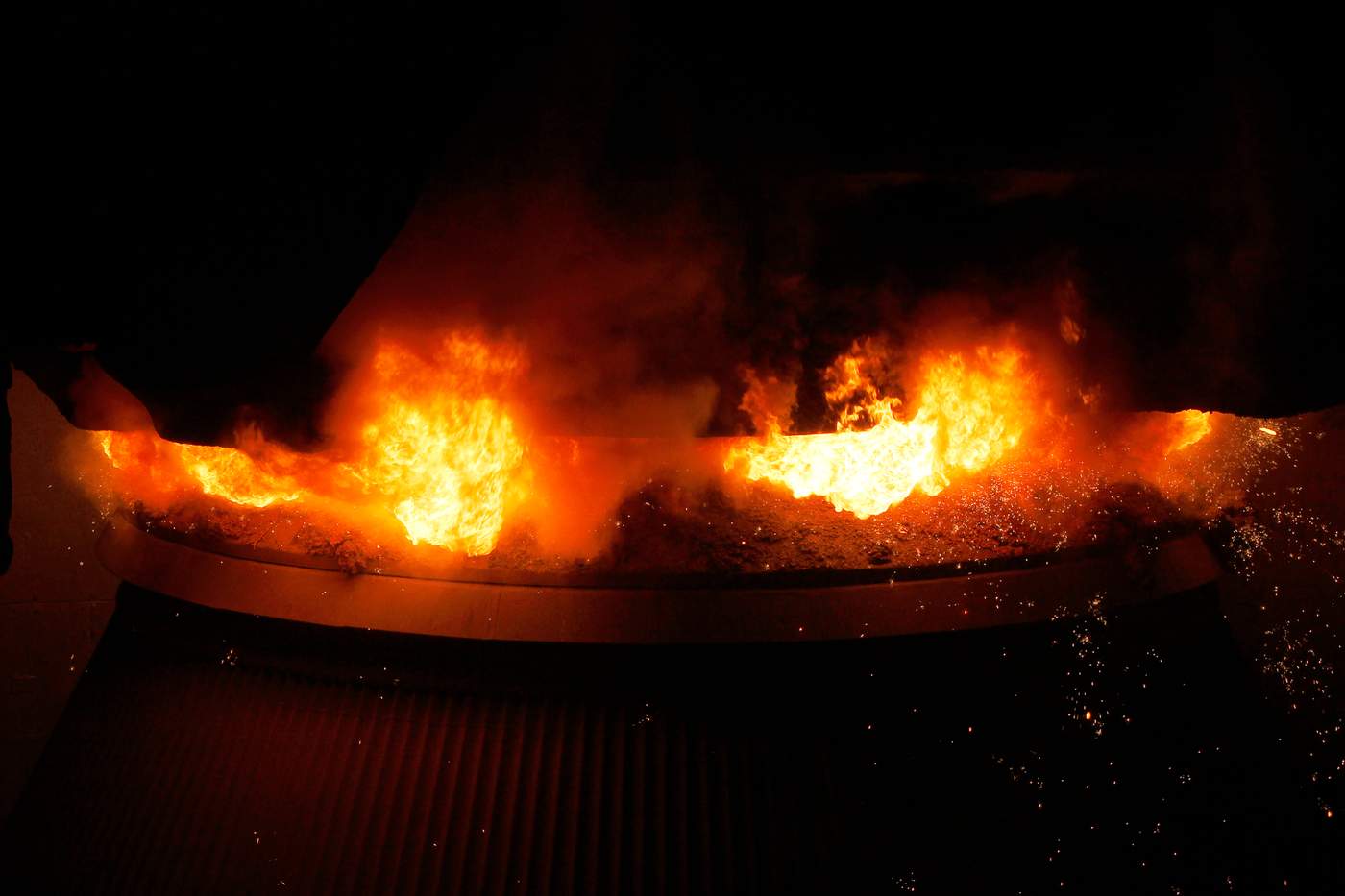The BOS is the point at which all the ingredients are combined to make steel.
The molten iron comes via rail from the blast furnace in torpedo ladles.
When it arrives at the BOS the torpedo ladle is tipped on its side and about 250 tonnes of molten iron poured into a hot metal pot.
While that’s happening, a huge hook is lifting up a massive skip full of the other main ingredient that will go into the BOS - around 70 tonnes of scrap steel.
Part of the advantage of using scrap steel is it means the process calls for fewer raw materials - though BlueScope is pretty picky about what sort of scrap they use.
A siren sounds, which is the signal for everyone to stand well clear of the BOS vessel or enter the perspex and metal-grilled control room opposite because of the small chance of ingredients flying out of the vessel.
The skip of scrap steel goes in first, followed by the molten iron - which starts eating the scrap and creating flames and heat.
Then an oxygen lance descends, stopping just above the molten mixture.
It shoots oxygen into the vessel at 2.5 times the speed of sound for about 16 minutes.
And that’s when all the sparks and flames that Barnsey uses in his video happens (at this stage it’s okay for Oz Rock stars - and everyone else - to come out from the control room).
What’s happening in there is the oxygen is reacting with the carbon in the vessel, which creates the heat.
At the end of the 16 minutes, the lance is removed and the vessel is tipped backwards where the 275 tonnes of molten steel runs into a ladle via a hole in the side.
The vessel then tips forward to remove the slag - a byproduct of the process that forms on top of the steel.
Then more scrap steel and molten iron goes in, and the process starts all over again.
So if Barnsey mucked up his lip-synching, he didn’t have long to wait for another load of steel to be made.










